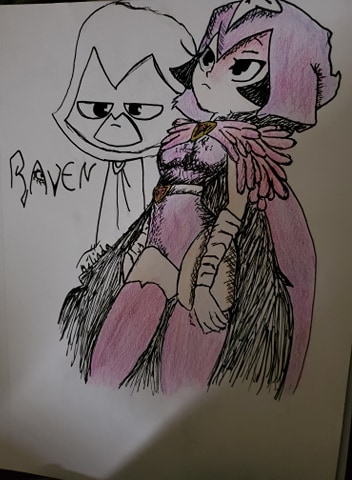If you are like me, the first thing that comes to mind when you hear the word avatar are the blue characters from the movie Avatar.![]()
I haven’t even seen the movie! That’s how powerful images are. I’m not going to talk to you about the blue avatars.
If you are a gamer, maybe the first thing that comes to mind when you hear or see the word avatar is the character you choose to be in the game. Again, that’s not the type of avatar I’m going to talk about here.
Have you noticed how social media platforms are now including little avatars we can create for our profiles? These are not the topics of my article today.
But what is the topic of my article? I’m going to talk to you about your ideal client: your avatar.
*May contain affiliate links. Clicking on the affiliate links will most likely result in the same price you would pay elsewhere or you may get a special offer using those links.
 What is an Avatar?
What is an Avatar?
An avatar is the description you have from your ideal client or ideal customer. It’s the person you want to target when you are investing in paid ads.
The more you know about your ideal client, the easier it will be to find it and start earning money by selling (or promoting) your products or services to it.
If you are promoting others’ products as an affiliate, you should be provided with a description of the people you should target for better conversion. If you don’t have such a description, you should ask for one, or learn how to create an avatar.
Why Do You Need an Avatar?
You can’t target the right audience properly without knowing who to target. More than ever, we can have access to tons of data on people that could be interested in the products or services we offer.
You need an avatar to know exactly who to target for a maximum of conversions.
Unless you want to spend a lot of time and money trying to figure out what works for you, creating an avatar will help you laser target the people who need your product.
Creating the avatar of your ideal client will help you market to it the right way. You will know everything about it.
The more you know about your avatar, the easier it will be to attract it to you.
Having an overall description and an in-depth comprehension of who is going to pay to get your product or service will make you save a lot of time.
If you are targeting too broad, you may hit many targets, but they may not be interested in your product. What it means for you is less conversions, therefore, less money and more frustration.
We live in a world where we can have access to so much information, now it’s time to make good use of it for your business.
The more you know, the better. Create your avatar. Use a picture and give it a name.
Wait, what? A name?
Does Your Avatar Really Need a Name?
The short answer is yes. The clearer the idea of your ideal client, the better the avatar, the easier it will be to talk to it when trying to attract it to you.
The longer answer is maybe not. It depends on how your brain works. Some people need to have the picture and the name, others will be fine knowing all the other details and they will make a mental image of their avatar.
Yet, the best way to keep the image of your avatar in mind is to put it on paper.
That way, you make sure you can refer to it anytime you want to create new content or when you want to create a new ad campaign.
Like I said earlier, the power of the association of an image with words will make its way in your head. You will then know by heart who you are talking to.
Just think about this: has it ever happened to you to walk in a store, let’s say you wanted to buy a computer, and the salesperson didn’t ask you questions to know what you needed and just started pitching you about The Best Computer in the world that happened to be on sale that day.
Worst, he talked about a desktop computer when what you wanted was a laptop because you don’t even have the space for a desktop. You need a laptop to be able to work from anywhere.
Are you going to buy? Are you going to walk out?
Keep in mind that with ads, it’s super easier to skip them or it’s super easy to click the X in the corner and keep on with your day.
You may be interested in reading my article on Copywriting.
Here’s another example: you want to buy clothes. Let’s get more specific, you want a new pair of jeans. So, you go to your favorite store and then the salesperson talks about today’s deal and then starts showing you random clothes.
If you get lucky, you may be able to tell the salesperson you want a pair of jeans. Then the person asks for your size and starts piling up different pairs in different styles and colors for you to try.
Are you going to try them all? You may end up trying the one or 2 pairs that fit your style. Maybe you didn’t find what you were looking for and you leave the store.
In the end, will you go back there to buy jeans?
In both examples, the salesperson didn’t take the time to get to know their client. Was the experience good? Not really. If the experience is not good for the client, you won’t make sales.
Most salespersons now take the time to ask a few questions, but the 2 examples I gave were not exaggerated. It still happens. That’s not a good business practice and it’s not good to make sales.
No sales = no money = no business.
And now..
What Are The Steps to Define Your Avatar?
It is quite easy. The steps consist in answering a series of questions.
The first block of questions is about demographics:
1- Male, female, trans, other? You don’t talk, or write copy, the same way when your ideal client is from another gender.
2- How old? Again, you don’t use the same language to talk to an 18 years old than with a 50 years old.
3- Marital status? Are they single, married, in a relationship, divorced, etc?
4- Does it have kids? If yes, how many?
5- What kind of work does it have? Are they entrepreneurs, retirees, etc?
6- What is its level of education?
7- Where does it work? In what industry?
8- What is its annual income? This will also help determine the kind of offer you can promote them.
9- In what country does it live? In which city?
10- What language does it speak?
Demographics are often the faster part when it comes to creating your avatar. Now that you have the basics, let’s dig a little.
You want to know more about their personalities:
1- What are its top 5 values?
2- What are its top 5 beliefs?
3- Who did it vote for?
4- What is its religion?
5- What are its personal interests, hobbies?
6- What social media platform does it prefer?
7- What are its influences?
There are tons of questions you could answer to really figure out who your avatar is. I’m giving you some guidelines to help you get started.
The last thing, one of the most important things, you want to know about your ideal client is: what’s its problem?
You need a problem to solve in order to be able to sell products or services. No problems to solve, no business.
Again, the more detailed the description, the better. Take your time to figure it out. It will be worth it.
You may be interested in my article on how to create Facebook ads.
Try to be able to tell your avatar’s story. For example: Larry is a 65 years old man living in Canada. He speaks English and French. He is married and has 3 children. He has been retired since he was 60 years old. He lives in his house with his wife. Larry was a construction worker, so he still has a good income even though he is retired.
Now he suffers from back pain that makes it hard for him to stay in any position and he is having a hard time sleeping well at night. In fact, that’s the reason he retired early, because of the pain.
He has tried different solutions, but nothing seemed to work. He needs something to get some quality in his life so he can enjoy his retirement.
This is where you position your product or service. You know you have something that will help Larry, so it will be easy to target him.
I know, I didn’t include every detail in my example, because I just wanted you to know about Larry. I talked about his story, so you get to see what kind of description you need to create for your avatar.
What I wrote about Larry is the bare minimum you want to create to be able to help your ideal client.
The clearer the picture you have of your avatar, the easier it will be for you to find it.
In Conclusion
Your avatar is your ideal client. It’s the person you know you can solve their problem. It’s the person you can help with your product or service.
Even as an affiliate marketer, you need to know who the products you are promoting are for. If you are not provided with more than just the demographics, you may have to do some research to make sure you target the right people.
The best way to make sure you target the right people as an affiliate, is to try the product. Then you will have a better understanding of the benefits and it will help you attract the right people.
So get into the details that will help you understand your ideal client and build your avatar.
Maybe your avatar is an older version of yourself…
Cynthia
